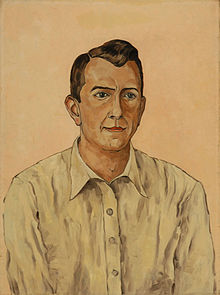Paul Kelpe
Paul Kelpe was a Germanborn American abstract painter. His constructions integrating found objects into paintings were the first such works created in the United States and he painted two of the five Williamsburg murals, the first abstract murals in the United States. In addition to his mural work for various American government projects, he was an innovative independent painter and university art professor. He was a pioneer of American abstract art, including his work in Chicago during a period in which abstracts were not well accepted or appreciated.
Paul Kelpe was born in Minden, Germany on January 15, 1902. After viewing an exhibit of abstract art, Kelpe, who had previously wanted to become a musician, decided instead to pursue a career as a painter. In 1919 he attended the Academy of Arts in Hanover, studying art history and architecture. His artistic training in Germany included studies with Wassily Kandinsky and Lszl MoholyNagy, and he encountered art by other modernists including Kurt Schwitters, Naum Gabo, and El Lissitzky. He became familiar with prominent European modernist movements of the time such as Suprematism and Constructivism. Schwitters in particular proved to be a major influence, but Kelpe, eschewing what he viewed as Schwitters disorderly style, created neater works, meticulously painting geometric shapes without noticeable brushstrokes. His work of this period depicted hardedged planes and shapes which overlapped and interpenetrated, and he conceived of his paintings as an organization of forms, not objects of
Source: Wikipedia

